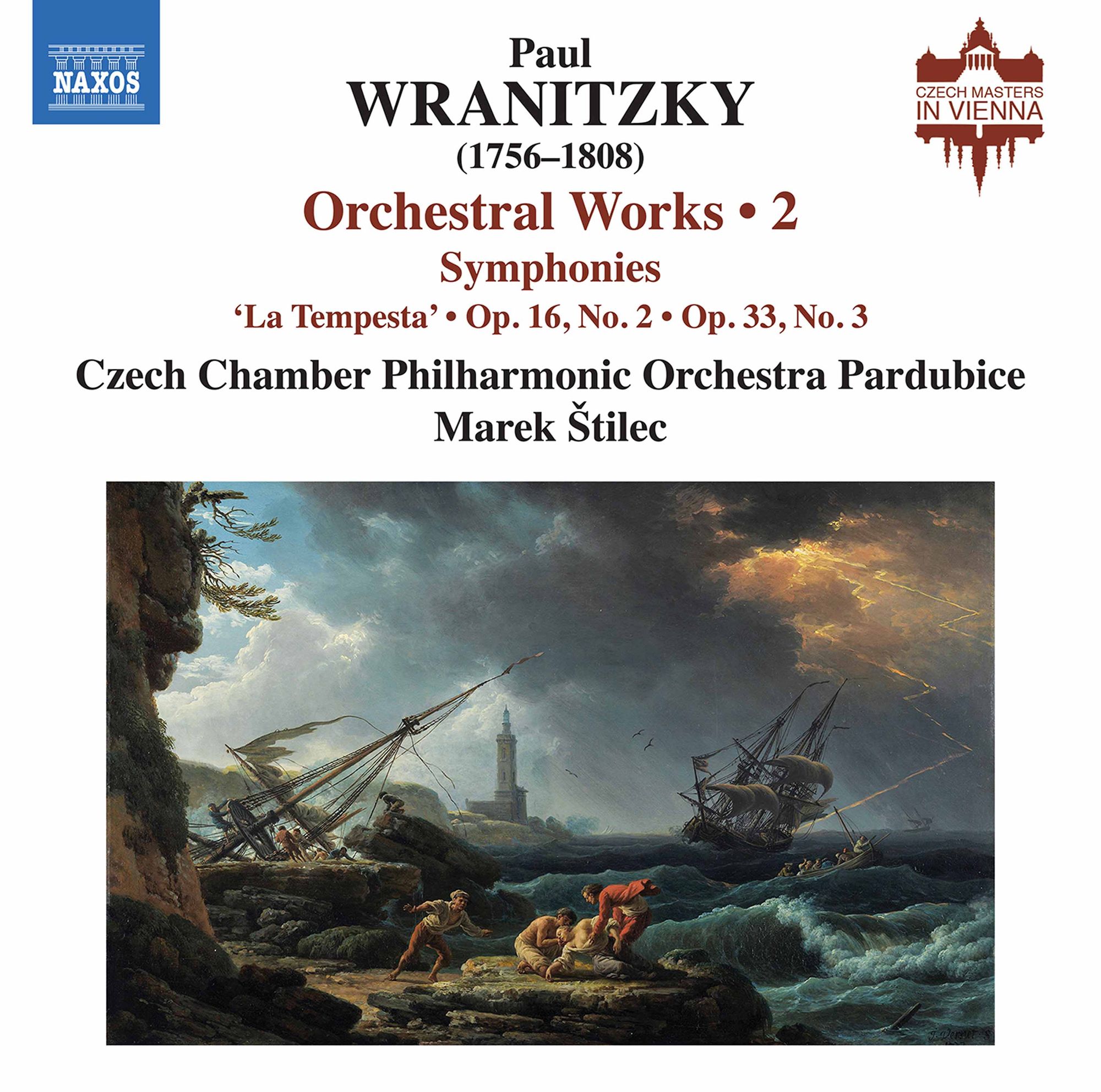Paul Wranitzky Orchestral Works #2
... this is a fine continuation of the Wrantizky series and certainly further volumes are keenly awaited.

In our previous post on the orchestral music of Paul Wranitzky (1756-1808) on Classical Explorer, we introduced the composer and extolled his virtues, plus those of the performances by the Pardubice orchestra under Marek Štilec (appropriate, of course, as Wranitzky was Czech by birth).
Last time we introduced the composer; now let's introduce another vital link in the chain of music from score to ear, that of the musicologist. Without musicologists, so much music of the past just would not see the light of day; here in the UK, one thinks of the likes of Ian Page and his Mozartists, while in France Christophe Rousset continues to unearth treasures. Here, it is the scholar Daniel Bernhardsson who has been burying his head in numerous European archives to bring this music to the surface. Mr Bernhardsson is also the mastermind behind The Wranitzky Project: see his profile on that site here. The work and diligence musicologists, both historical (working with sources) and analytical is vital to our continued, informed exploration of repertoire and Classical Explorer for one would like to see generally more appreciation of these talented researchers.
We can perhaps hear a precursor to Beethoven's "Pastoral" Symphony in Wranitzky's Symphony in D minor, "La Tempesta" (Wranitzky's piece was composed around a decade before Beethoven's). Here's the first movement:
A gentle Adagio offers solace, its gentle rocking theme of Mozartean grace; but then clouds form, albeit delicious clouds!;
Actually, there's more than a pre-echo of that Beethoven "Pastoral" in the contrasting moments of the finale. One has to be careful with so many analogies, though: there is no doubt Wranitzky has his own individual voice.
"La Tempesta" does not have an opus number; but we do know that the little A major Symphony, Op. 16/2, was published in 1791, although probably written in the mid-1780s. It's little not just because it is the shortest symphony on the disc, but also because it is considerably more compact than its companions in the Op. 16 set of three symphonies. But it is a full-far four movements, the slow movement of which includes some interesting scoring, including muted violins accompanied by a single viola at the opening. The themes are charming, the scoring a delight (listen to the bassoon solos, or the small but significant contributions of the horns):
The compact Symphony in A major represents Wranitzky’s early symphonic period of the mid-1780s while the Symphony in F major is notable for its catchy themes and masterful scoring. How lovely to hear the antiphonal dialogue between strings here too:
The Symphony in F begins in almost a ceremonial manner - one could imagine the Andante introduction to the first movement accompanying a Masonic passage in an alternative Mozart Zauberflöte!
(and do maybe listen to the whole movement - there is a moment of pure harmonic magic at around 5'30 that just shows what imagination Wranitzky had!).
This final symphony on the disc has an Allegretto as the second movement in lieu of a slow movement proper, and it as fresh as that tempo indication indicates (and listen to the rapid trumpet fanfares around the three-minute mark!). It is in fact a set of variations on "Freut euch des Lebens" (Let Us Cherish Life), composed by Hans Georg Nägeli (1773–1836) in 1795:
I want to quote the Menuetto and Trio because you will almost certainly know the theme of the Trio - which is actually a set of variations on O du liebe Augustin!:
Fine planning to place this symphony last, and not just for the novelty value of its sets of variations; the finale has something of the feel of an opera buffa overture.
The overture to Der Schreiner (‘The Carpenter’) dates from 1799 and consititues teh first track on the disc. I have left it until last as, for all its nicely unpredictable accents, it seems of a lower level of inspiration than the symphonies, The opera was a one-acter with the amusing plot of love notes baked into Krapfen (Austro-German holeless doughnuts) and the chaos they can create, The opera I am sure is delightful. But frankly the level of inspiration for the Overture seems dulled, for all the vim the Pardubice orchestra injects into this performance.
Overture aside, this is a fine continuation of the Wrantizky series and certainly further volumes are keenly awaited.
